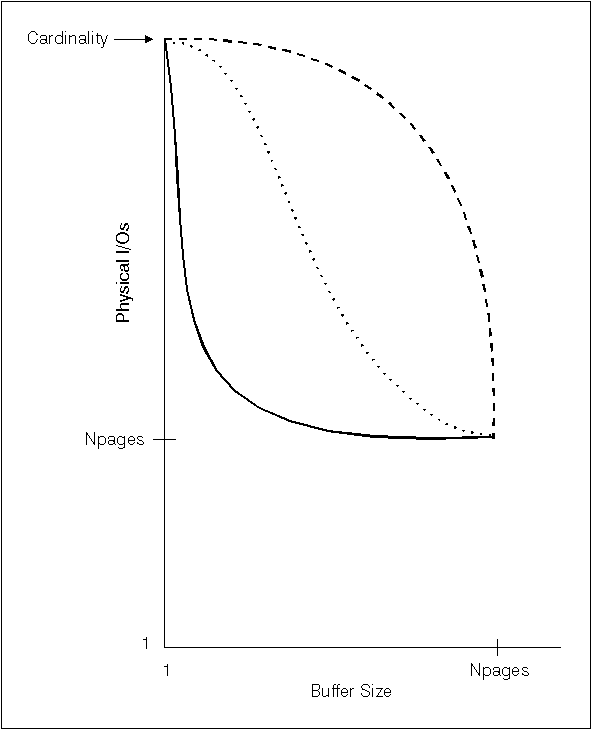
As an option, you may collect more detailed statistics on indexes that help the optimizer better estimate the cost of accessing a table using that index. This can be done in one of two ways: First, you can use the DETAILED clause on the RUNSTATS command; or, second, you can specify A, Y, or X for the statsopt parameter when calling the RUNSTATS API. The DETAILED statistics PAGE_FETCH_PAIRS and CLUSTERFACTOR will be collected only if the table is of a sufficient size: around 25 pages. In this case, CLUSTERFACTOR will be a value between 0 and 1; and CLUSTERRATIO will be -1 (not collected). For tables smaller than 25 pages, CLUSTERFACTOR will be -1 (not collected), and CLUSTERRATIO will be a value between 0 and 100; even if the DETAILED clause is specified for an index on that table.
The DETAILED statistics attempt to capture, in a concise way, the number of physical I/Os that will be required to access the data pages of a table when a complete index scan is performed under different buffer sizes. As RUNSTATS scans through the pages of the index, it models the different buffer sizes, and gathers estimates of how often a page fault occurs. For example, with only 1 (one) buffer page available, every new page reference by the index will result in a page fault, and, in a worse case, every row could reference a different page, resulting in at most CARDINALITY I/Os. At the other extreme, when the buffer is big enough to hold the entire table (subject to the maximum buffer size), then each of the table's NPAGES pages will be physically read exactly once. The number of physical I/Os must therefore be a monotone, non-increasing function of the buffer size.
RUNSTATS fits a piece-wise linear curve to these estimates, which is stored as a string of 11 pairs in the PAGE_FETCH_PAIRS statistic. The first value in each pair is a hypothetical buffer size, and the second value in each pair is the estimated number of physical I/Os to fetch the data pages in a complete scan of the index, with a buffer of that size totally available to that index scan. The optimizer then uses the PAGE_FETCH_PAIRS statistic to estimate the number of physical I/Os for data-page fetches in any complete or partial index scan using that index.
The shape of the curve stored in PAGE_FETCH_PAIRS for an index will depend upon the clustering behavior of that index.
Figure 77. Three Curves for Clustered and Unclustered Indexes
 |
There are three types of curves that are possible:
You should use DETAILED index statistics when your queries reference columns that are not all in the index. In addition, DETAILED index statistics should be used when:
It may be quite hard to determine these situations without previous knowledge, and without attempting to force an index scan under varying buffer sizes and using the monitor to observe the physical I/Os that result. Probably the cheapest way to determine whether any of these situations are occurring is to collect the DETAILED statistics for an index and retain them if the PAGE_FETCH_PAIRS that result are non-linear.